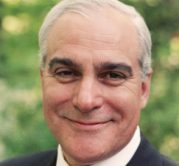Leaders as stewards of human capital

In a healthy culture, leaders at all levels of the organization become stewards of human capital. Leadership becomes the single most important human-capital issue, as good leadership drives organizational health, which in turn drives profitability. It requires a commitment from the top, starting with the CEO, and must permeate every level of the organization.
It is essential that leadership development programs be seamlessly integrated into an organization’s culture. Too often, however, this is not the case. They frequently are short-term, sporadically funded and viewed as non-critical expenditures. U.S. companies spend plenty on these programs (about $14 billion annually), however, what is often referred to as “leadership development” is simply the purchase of “one-off” solutions” that do not help in the creation of an organizational culture of continuous learning and leadership development.
Adding to this challenge, succession planning and the building of leadership pipelines, key responsibilities of management and boards, is in short supply in most organizations, often to the point of negatively impacting strategy implementation. According to a recent Deloitte survey, only 32% of organizations have succession planning for top level employees, and an unacceptably low 18% consistently hold their leaders accountable for recognizing and developing successors. Just 6% of respondents feel they have “excellent” programs for Millennial leadership development (employees in their 20’s and 30’s), despite the fact that 53% of Millennials strive for leadership positions.
In a healthy culture of organizational learning and leadership development, leaders at all levels must continuously focus on recruiting, identifying and developing future leaders. It is no longer just the responsibility of HR or senior management. It becomes ingrained in the fabric of the organization, and leaders are held accountable for this responsibility, and rewarded for its success. This involves the delegation and support of effective learning by serving as coaches and mentors to increase the leadership capacity of their team. In this “leader as teacher” model, they make sure their team members gain relevant experience by providing challenging stretch assignments designed to help them grow and gain the competencies necessary for success in their current and future roles within the organization. Through introspection and emotional intelligence, leaders examine their own behaviors and belief system to assure that their mindsets are not inhibiting the growth of their direct reports. For example, some managers may believe in “command and control leadership”, which results in counter-productive behaviors such as a reluctance to delegate, or an avoidance of providing challenging stretch assignments, resulting in a failure to develop leadership capacity within an organization.
Millennials represent a particularly important group. They are the next generation of leaders, requiring the knowledge, tools and experiences to develop the competencies necessary for effective leadership. The most effective development methods combine structured classes (e.g., in-person, on-line and webinars) with real life projects and regular feedback. Adults typically retain only 10% of what they hear in a classroom, while learning through real-life work experience has about a 60% retention rate. Organizations maximize learning when structured classes that teach theory and best practices are applied to stretch assignments involving actual projects that must be delivered on time and on budget, while being coached and mentored by experienced leaders. It seems that 20% classroom learning combined with 80% real world experience tends to be the ideal blend. This mix of multiple method competency development results in engaged performance, lower turnover, improved effectiveness and increased job satisfaction.
Measuring the effectiveness of leadership programs is analogous to accounting for any business investment. The organization must appreciate the value of investing in people, often referred to as their greatest asset, and arguably the largest differentiator between organizations. Data-driven assessments can help evaluate a program’s effectiveness by measuring leadership qualities and competencies before and after these ongoing programs. Since leadership development is not a “one size fits all” and must be carefully integrated into the organizational culture, there must be a continuous evaluation of what works best and what changes are needed for continuous improvement. What is painfully clear is that an organizational focus on leadership is directly linked to long-term success, where the organizational culture drives higher productivity and the organization becomes more effective in achieving strategic objectives and delivering increasingly positive results

